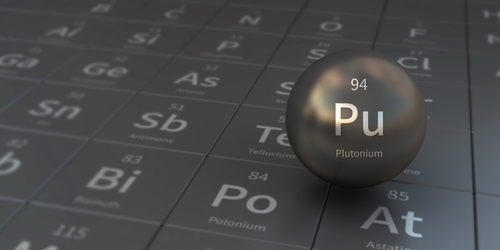Adding Certainty to Plutonium’s Fission Yield
Bombarding certain atomic nuclei with neutrons releases vast amounts of energy, a possibility that has proved both a blessing and a curse for the world’s inhabitants. This interaction also produces myriad neutrons, along with rare, short-lived nuclei and other reaction outputs. Determining the properties of these outputs for plutonium-240, a commonly used nuclear fuel component, however, has been challenging, leading to uncertainties in calculations related to the safety and performance of nuclear reactors. Now a team of researchers from Los Alamos National Laboratory (LANL) in New Mexico and Lawrence Livermore National Laboratory in California have taken a step toward reducing that uncertainty by measuring the energy spectrum of neutrons emitted after the neutron-induced fission of plutonium-240 [1]. These measurements provide vital information about the neutrons that are available for further reactions.
For the experiments, the team bombarded a tungsten disk with a pulsed 800-MeV proton beam, generating neutrons with energies between 10 keV and 800 MeV. Neutrons traveling 15° to the left of the proton-beam direction then impinged on a plutonium-240 target. A detector array recorded the signals of particles that emerged from the target region after each proton-beam pulse. From these measurements, the researchers determined the energy of each incident neutron, as well as the energies of those produced during any fission reactions.
The measurements also provided the first clear evidence that plutonium-240 can undergo exotic fission processes that are known to occur in other nuclei, such as the emission of neutrons prior to the start of a fission reaction. Keegan Kelly of LANL says that the measured neutron-energy spectrum displays significant deviations from that predicted by models. As such, Kelly says that these new data should be considered when designing future reactors and when developing models of similar physical systems.
–Rachel Berkowitz
Rachel Berkowitz is a Corresponding Editor for Physics Magazine based in Vancouver, Canada.
References
- K. J. Kelly et al., “Measurement of the prompt fission neutron spectrum from 800 keV to 10 MeV for 240Pu(sf) and for the 240Pu(n, f) reaction induced by neutrons of energy from 1–20 MeV,” Phys. Rev. C 109, 064611 (2024).




